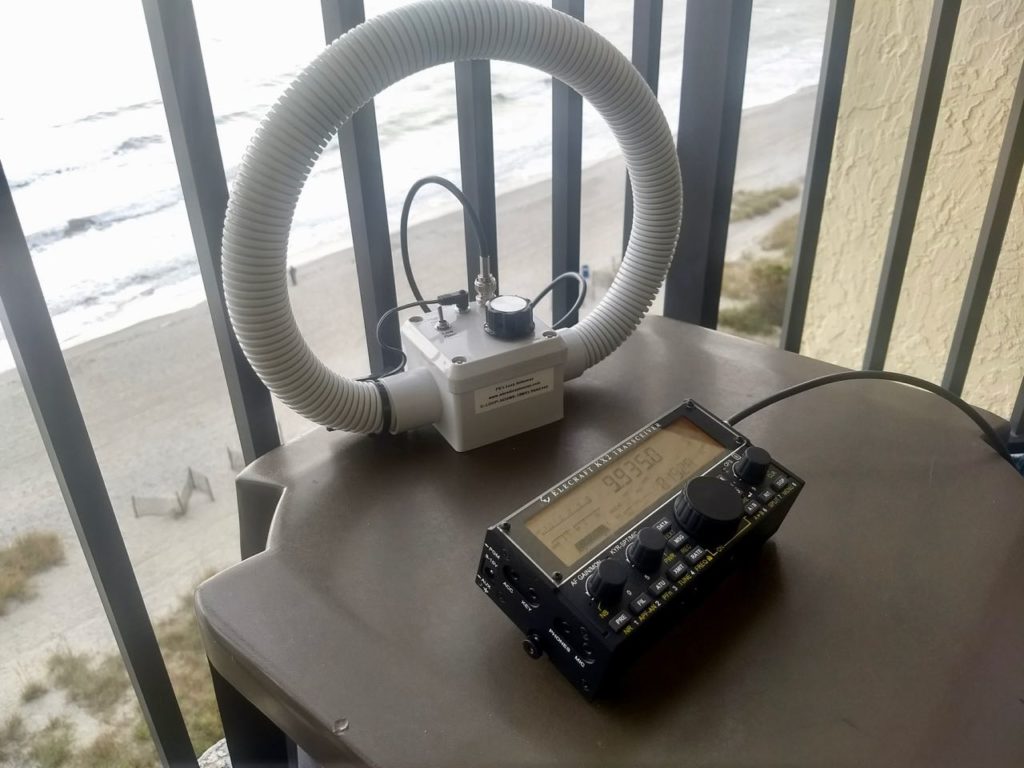 In 2016, I purchased portable shortwave magnetic loop antenna designed and built by Paul Karlstrand in Australia. I posted a “preliminary” review of this antenna in 2016 and since then have taken this loop on many travels.
In 2016, I purchased portable shortwave magnetic loop antenna designed and built by Paul Karlstrand in Australia. I posted a “preliminary” review of this antenna in 2016 and since then have taken this loop on many travels.
SWling Post contributor, Ron, recently noted that Jay Allen reviewed one of Paul’s inductively-coupled mediumwave magnetic loop antennas. Jay gave it good marks on performance as it compares favorably with the Grundig AN-200, Select-A-Tenna M, and Terk Advantage AM–even having a performance edge due to it’s larger loop diameter. (Note that Paul makes a number of loop sizes–click here to download PDF of catalog.)
But what really sets the PK Loop apart from its competitors is its durability. PK’s Loops are built to be incredibly rugged. I routinely throw my PK Loop antenna in bags/packs and–unlike most of my other radio components–never worry about how it’s padded or protected. There’s little to damage unless you’re intentionally abusive to this antenna. My Grundig AN-200 antenna, on the other extreme, has exposed coated wires around its loop that I’m constantly concerned about harming in transit.
Following up…
Ron’s message reminded me that I never followed up after posting a preliminary review of the PK Loop C-LOOP-HDSW6-18 in 2016.
Shortly after publishing the review, I had a fantastic opportunity to evaluate how well the PK Loop would perform in a typical hotel room. My buddies Eric (WD8RIF), Miles (KD8KNC) and I stayed overnight in a hotel on Wright-Patterson Air Force Base during our mini National Parks On The Air DXpedition.
The hotel room was indeed dense with RFI.
We hooked my Electraft KX2 to both the PK Loop and to a simple random wire antenna.
Without a doubt, the PK Loop was much better at mitigating radio noise than the wire antenna we hung on the inside of the hotel window.
Unlike most modern hotels, however, this one actually had operable windows, so we tossed the random wire out the window and made another comparison. In this case, the external wire antenna consistently outperformed the PK Loop, no doubt because it had the advantage of being outside the radio noise cloud within the hotel’s walls. It goes to show that outdoor antennas–even if simply hanging from a room window–will almost always outperform comparable indoor antennas.
Last summer, I also spent two months in a condo near Québec City. The condo was dense with RFI–the PK Loop made the experience much more bearable. The loop couldn’t completely eliminate all of the persistent wideband noise, of course, but it did reduce noise to a level that I could enjoy some of my favorites like RRI, VOG, VOT, REE, WRMI, RNZI and even weaker stations in North America like the BBC and DW.
Even the shortwave version of the PK Loop can null out QRM to some degree by rotating the loop perpendicular to noise. I became quite adept at this by the end of our stay.
Summary
Since I purchased the PK Loop, it’s been a constant travel companion and I highly recommend it. I don’t believe you’ll find a more durable or effective portable mag loop antenna on the market.
PK Loops are built by Paul Karlstrand in Australia who has a stellar reputation with his customers. For those of us living outside Australia, there will be additional shipping costs, but they’re negligible and Paul has been exporting these loops for many, many years. I believe I received my loop within a couple of weeks of ordering it.
Click here to view a PDF catalog of Paul’s loops and products.
As an added convenience, Paul also has an eBay store where he sells the following antennas:
- 14″ AM/Mediumwave Loop Antenna (approx. $79 US shipped)
- HD Series “HamLoop” Antenna for 3.5 – 14.5 MHz (approx. $199 US shipped)
- HD Series Shortwave Loop Antenna for Reception of 6 – 18 MHz [the model in this review] (approx. $193 US shipped)
This year, I plan to purchase PK’s largest mediumwave loop, the model HDXLTAM that boasts a 20″ diameter. Please comment if you have experience with this loop or any of Paul’s loops!

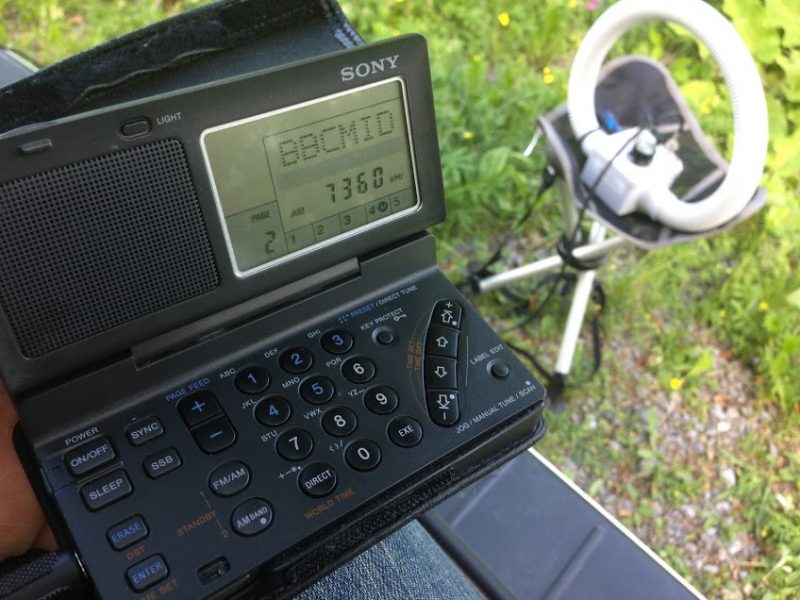
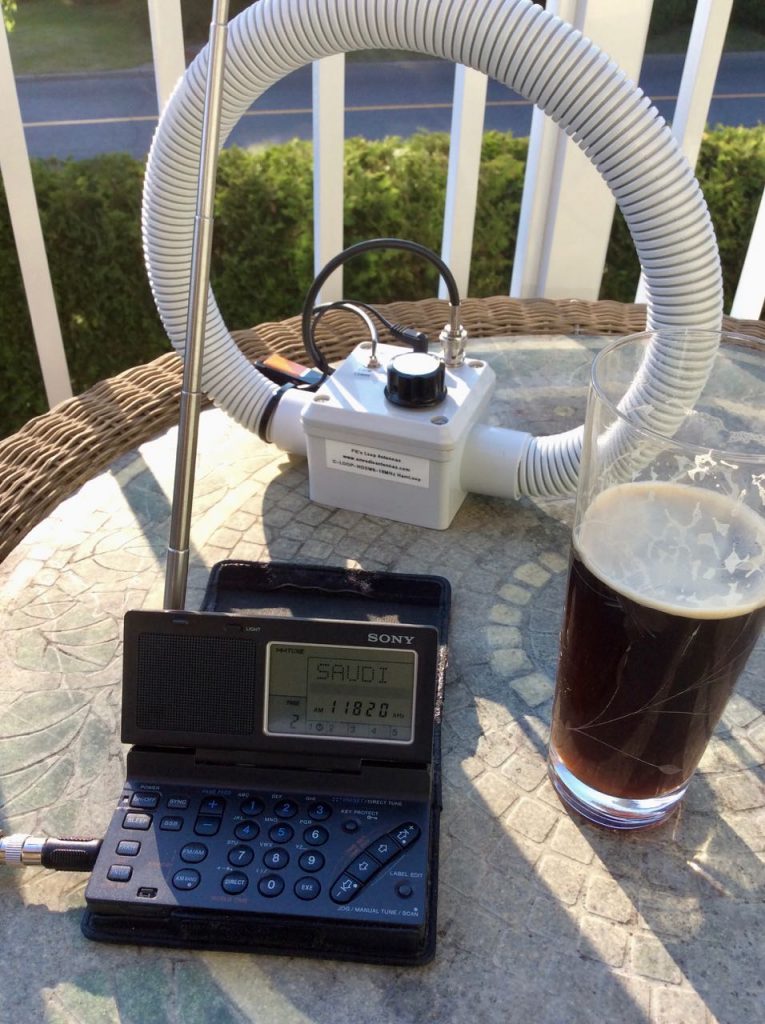
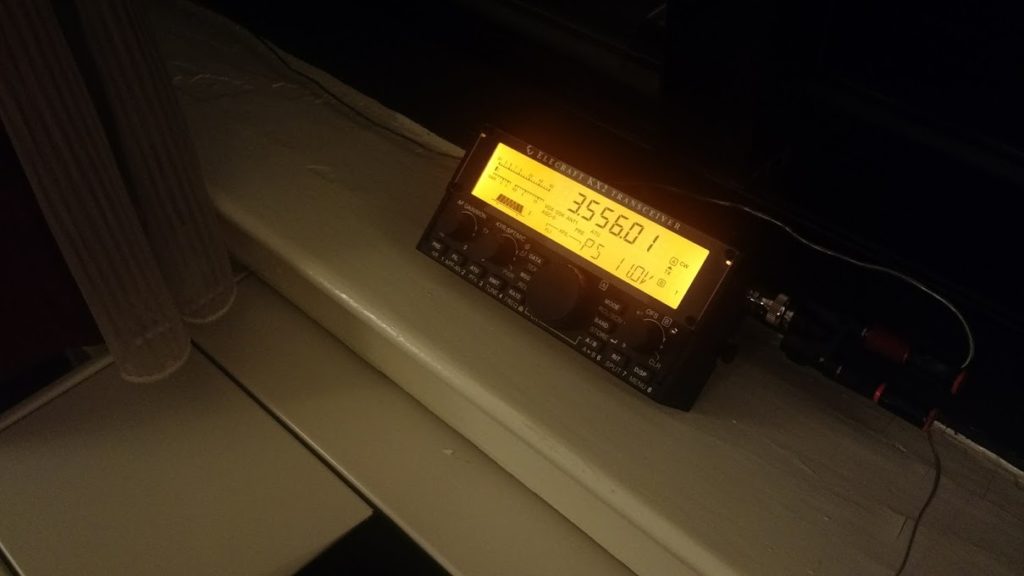
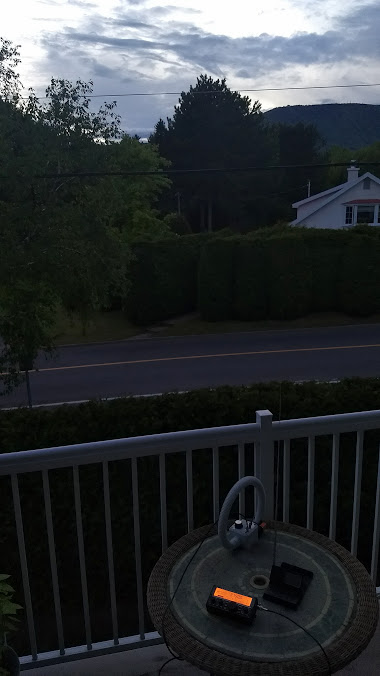
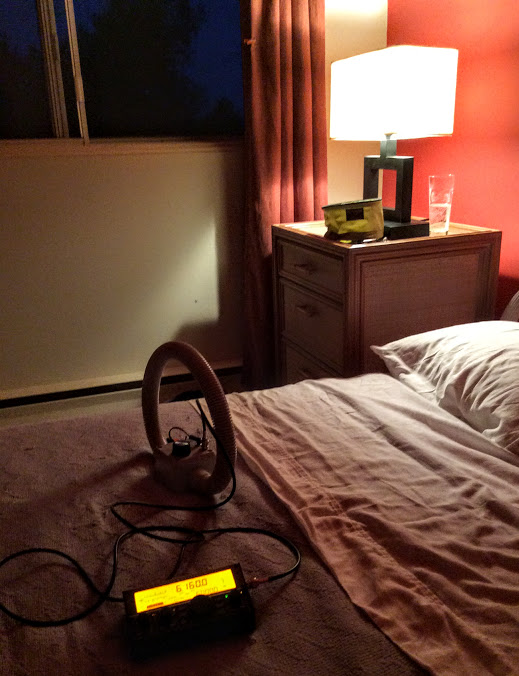
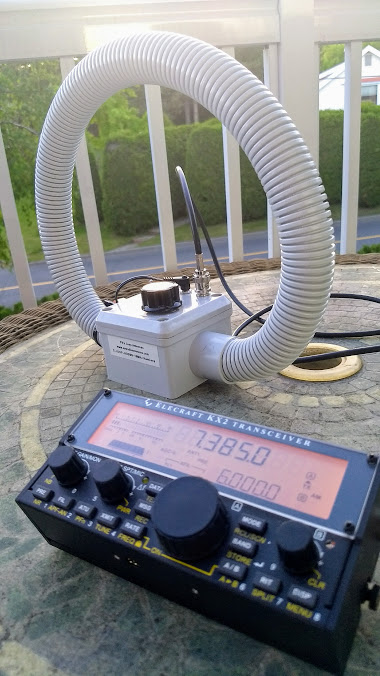
Hi Thomas,
Thanks for the fine follow-up on the PK Loops. I own the HamLoop model and I’m extremely pleased with it. Based on my experience with other loops I suspected it would have a wider range than 3.5 – 14.5 MHz. Indeed that’s the case–mine will go from approximately 3.2 – 15.8 MHz. This is great news to me, as I was hoping it would cover the 90m band as well as reach up to a favorite R. New Zealand frequency of 15720 kHz. I’m happy to report that it does cover both, especially when using a 12VDC gel cell battery as power source.
As you know, the HamLoop and 6-18MHz shortwave models come with a 9VDC transistor battery holder for power. As Paul indicated to me, a supply higher than 9 volts would provide improved performance. The improvement is so good I never power my HamLoop with 9 volts! I gain improved tuning range as well as a lower noise level with a 12 volt battery supply.
I often use a right-angle BNC adapter on the antenna output of my PK Loop; I think it makes for a tidy setup. However, use caution as these adapters (I’ve tried two brands) easily have intermittent connection if bumped or moved during use.
One use scenario I really like for the PK Loop: outdoors away from noise sources, but in areas where you aren’t otherwise permitted to string an antenna, or where a typical antenna would attract too much attention.
Wow, Guy. I’ve never thought about feeding my loop 12VDC! I’ll give this a go. In truth, I almost always have a 12V power source when I travel by car–I’ve a LiFePo battery pack that I love and would probably power this for months on one charge! 🙂
I’ll put a right angle BNC with the kit, too. keeps it tidy!
Thank you for the comment!
Thomas
Hi,
Just wondering has any one compare this PK loop to The Sony AN-LP1? Or the MLA 30+?
Thanks
The PK Loop is a good antenna but like a lot of loops it requires constant tuning when moving accross the bands. In reality it doesn’t perform much better than a good random wire in my opinion.
Spoken like a man in a fairly RF-noise-free environment 😉
In my little part of suburbia – which is unusual in that I _can_ actually string a good long random wire out high in the open well away from houses – a (passive, remotely-tuned, 1m) loop sitting on my verandah means the difference between catching European & low-power African stations in the bottom 15MHz, and not being able to get anything other than CRI above S6~7 noise. And my little homebrew “PK-alike” is both an adequate performer at home and a good travel antenna.
They’re not the universal solution/panacea that some proponents claim – and they’re certainly not as sensitive as a more traditional antenna – but they do come into their own in noisy areas. Sometimes you need to sacrifice absolute signal-catching ability to be able to actually hear signals…
Well said,RonF.
Those who don’t have to contend with noise from cell phone
chargers,some TV’s,switching power supplies and the like
don’t know how truly fortunate they are.
For the rest of us it’s too often a matter of being able to
persue this hobby or not.
We are into loops and anything else to get around the
Infernal Noise problems,not because we like doing this
sort of thing but because we have to.
If you ever delve into Longwave,it’s a way of life.
$193? Eh …
Is it $173 better than the AN-200 that I picked up, on sale, several years ago? Is it $163 better than the Terk I also own? I need more convincing. Yes, more convincing … like video [or audio] type of convincing.
I recently purchased both the 14″ MW antenna (which competes with the AN-200) and the 6 – 18 Mhz SW antenna via Paul’s Ebay site. I paid approximately $64 and $175, respectively, which included shipping costs to the U.S. I am very pleased with both antennas. I also have the AN-200 antenna and Paul’s MW antenna is substantially more effective.
Thanks.
I also mis-read Thomas’ Post! The 14″ AM Loop is $79 … NOT $193. $193 is the HD Series **Shortwave Loop**. My bad for mis-reading it. Obviously the AN-200 & Terk are AM Loops as well.
Thanks again for the comment.
Soooo… what is the name of that tasty looking beverage in the third photo? 🙂
Asking the important question. . . . ?
That was supposed to be a smiley face, not a question mark!
Ha ha! Indeed the important question!
Ah yes…that would be L’Ecurieux nut brown ale from les Brasseurs du Monde. Here’s a better photo:
Excellent brown ale, by the way!
I have purchased loops from Paul for years…he’s an honest guy,good ham and a
man of character.
The price of his loops depends on the U.S.-Australian exchange rate which constantly
varies.
Usually the standard 14 inch loose coupled passive loop (the A series) can be had
for around 100 usd.
He ships airmail but it has to go through U.S. Customs so expect about ten days
from purchase (he does take PayPal).
Don’t sell the 14 inch short…in November 2016 Jim Farmer of San Antonio used
one with a Sony 7600GR to get and record the late France Inter on 162 khz.
(Caution…there are two 14 inch LW loops offered,you want the 155-500 full band
version.)
And I thank you again, Ron, for turning me on to Paul’s 14″ LW loop. Recently with the Sony it’s helped me pull in some NDBs from new states (CA, GA, IA, MT) as well as a new country/continent – 365 PAL in Guayaquil, Ecuador.
You are most welcome.
As I told you early on,came across an Italian ham’s
struggle with Noise in his home and in his town.
It was so bad he stated three rules to follow:
1.All equipment battery powered.
2.All equipment portable.
3.Use a loop.
He had to go out to the boonies next to a vinyard to
get good reception with no noise.
Post the recording of this 162khz France